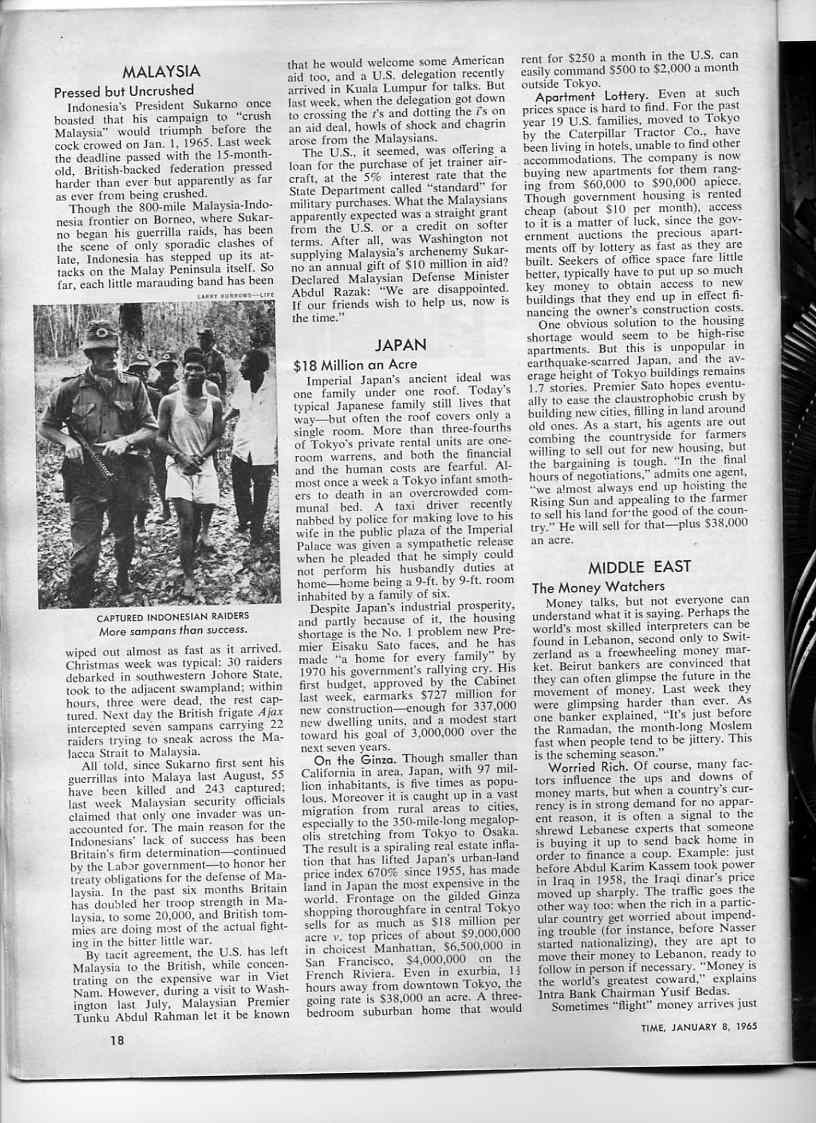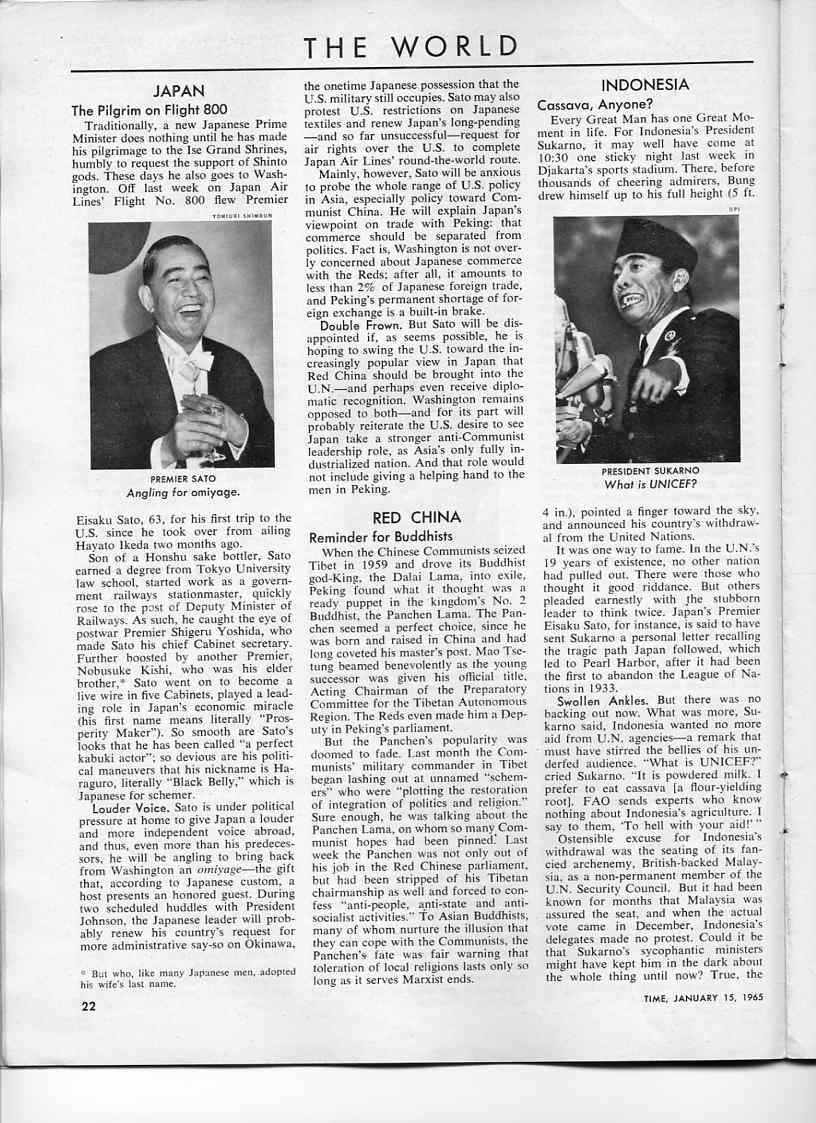mytest
Hi Blog. An article I found completely by chance during a walk around Kyoto a couple of years ago.
Spotted in a basket outside a boutique: Old TIME magazines, which completely by chance had issues published around when I was born (January 13, 1965). Decided on a whim to buy the issues which straddled my birthday to see what was news back then. And discovered that TS Eliot died around when I was born (January 4). Anyway, the article:
(Widen your browser or click on image to see full article)

TIME Magazine January 8, 1965
(Here’s the cover, ‘cos I love the old painted TIME magazine covers:)

COMMENT: It’s interesting how Japan’s high-growth economy has already by 1965 created a huge economic bubble, and how even back then the Western media was noting the “rabbit hutch” housing market. And love the anecdote about this lack of space inhibiting conjugal relations…
But I cite this article because it contains the Fun Fact:
“THE AVERAGE HEIGHT OF BUILDINGS IN TOKYO WAS 1.7 STORIES IN 1965.”
Amazing to consider, with the price of land beggaring everyone both in terms of budget and space.
This also meant that PM Satou Eisaku’s policy of earmarking public funds to alleviate this housing shortage (3 million units to be built over seven years) is probably the main reason why so many buildings in Tokyo were built for function, not form. They had to go up as quickly as possible–which meant:
1) The “rabbit hutches” were just stacked on top of each other–see the horrible danchi system to this day in Adachi-ku, for example.
2) The construction lobby (kensetsu zoku) would thus get phenomenal power in terms of politics and corruption (for when you throw public money at a problem without time for oversight, there is nearly always skimming and cut corners). This probably enabled the kensetsu zoku to continue leaning on the government for more boondoggle seibi projects (see Kerr, DOGS AND DEMONS) even after the housing shortage was alleviated. The impact of that on Japan’s financial health still resonates today.
3) As Tokyo does, the rest of the country follows. The economies of scale created by these cookie-cutter houses influenced housing design nationwide. Meaning (in my opinion) Japanese houses are still some of the the highest-priced for the lowest quality in the world, and still largely devoid of esthetic (i.e. despite many exceptions, still generally built for function, not form–especially up here in Hokkaido).
I’m probably overstating the case. But this article answered quite a few burning questions for me about why Japanese are so rich yet in terms of housing live so poorly. Debito in Sapporo
———————-
PS: Another interesting article from the following week’s TIME Magazine on PM Satou follows FYI. Contains a bit of the contemporary attitude of belittling Japanese leaders (cf. de Gaulle’s description of PM Ikeda Hayato in 1960 as a “transistor salesman”).
It also contains the bonus Fun Fact that PMs Kishi Nobusuke and Satou Eisaku were brothers. Japan’s political world is indeed riddled with an elite. D
(Widen your browser or click on image to see full article)

ENDS
2 comments on “Fun Facts #3: TIME: Japan’s postwar housing shortage and the aftermath”
To clarify the footnote on Kishi: What happened was that he married into a family with no male heirs, so he adopted their last name. This custom was probably what the Time reporter was getting at but didn’t entirely explain.
Also, Time has put most of their back articles online for free, so their website is a great place to find descriptions of what the world was like in the last century. There are a few cover stories on postwar Japan which should be required reading for Japanese history buffs.
“Peking’s permanent shortage of foreign exchange is a built-in brake.”
Hot damn! Those must have been the days to be the USA!